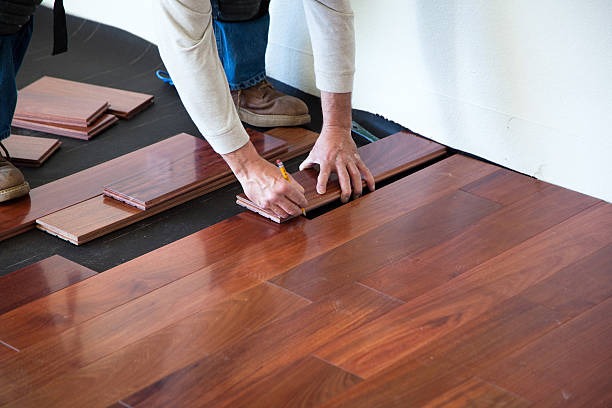Table of Contents
Flooring is one of the most important aspects of any home. Not only does it affect the overall look and feel of your space, but it also impacts functionality, comfort, and long-term maintenance. However, floor installation can sometimes be expensive if not planned carefully. Fortunately, there are many budget-friendly flooring options and strategies that allow homeowners to achieve beautiful, durable floors without overspending. In this guide, we’ll explore materials, installation tips, and practical advice for cost-effective floor installation in every room.
Understanding Floor Installation
Floor installation is more than simply laying down materials. Proper preparation, planning, and technique are essential to ensure long-lasting and visually appealing results.
Importance of Professional Installation
Professional floor installation ensures that your floors are:
- Accurately measured and cut
- Properly leveled and installed
- Durable and resistant to wear and tear
- Free from common mistakes that could be costly to fix
While DIY installation is an option for some materials, hiring professionals can save time and prevent future repair costs.
Assessing Your Needs
Before choosing flooring, consider your lifestyle and home requirements:
- High-traffic areas like kitchens and hallways
- Moisture-prone spaces such as bathrooms and laundry rooms
- Style and color preferences
- Budget limits
Knowing these factors helps in selecting the most suitable materials for cost-effective floor installation.
Budget-Friendly Flooring Materials
The choice of materials plays a key role in achieving a budget-friendly floor installation.
Vinyl Flooring
Vinyl is an affordable and versatile option.
- Benefits: Water-resistant, easy to clean, comes in sheets, tiles, or planks
- Best For: Bathrooms, kitchens, and living areas
- Tip: Self-adhesive vinyl is suitable for DIY installation
Laminate Flooring
Laminate mimics the look of hardwood or stone without the high cost.
- Benefits: Durable, scratch-resistant, low-maintenance
- Best For: Living rooms, bedrooms, and hallways
- Tip: Choose click-lock laminate for easier DIY installation
Engineered Wood
Engineered wood offers the look of hardwood at a lower price point.
- Benefits: Attractive, stable in humidity changes, affordable
- Best For: Living areas and bedrooms
- Tip: Floating installation reduces labor costs
Ceramic and Porcelain Tiles
Tiles are durable and ideal for moisture-prone areas.
- Benefits: Long-lasting, easy to clean, water-resistant
- Best For: Bathrooms, kitchens, and entryways
- Tip: Use standard tile sizes to reduce cost and waste
Carpet
Carpet provides warmth and comfort at an affordable price.
- Benefits: Soft underfoot, insulating, wide range of colors and textures
- Best For: Bedrooms, living rooms, and playrooms
- Tip: Pre-purchased carpet padding enhances comfort and durability
Cost-Saving Strategies for Floor Installation
Even with budget-friendly materials, smart planning can further reduce costs.
Reuse Existing Materials
- Refinish hardwood floors instead of replacing
- Reuse subflooring or leftover tiles in closets or small spaces
Choose Standard Sizes
- Standard planks or tiles reduce material costs
- Simplifies installation and minimizes waste
DIY Installation
- DIY is suitable for vinyl, laminate, or peel-and-stick tiles
- Save on labor costs by handling smaller rooms yourself
Buy in Bulk and Plan Layouts
- Purchasing materials in bulk can reduce costs
- Plan cuts to minimize waste and reuse leftover pieces effectively
Preparing for Installation
Proper preparation is crucial for a smooth and cost-effective floor installation.
Clear the Area
Remove furniture, rugs, and appliances before starting.
Inspect the Subfloor
- Ensure it is level and free of damage
- Repair cracks and clean thoroughly
- Add underlayment if needed for soundproofing or insulation
Gather Tools and Materials
For DIY projects, have all necessary tools ready: measuring tape, cutting tools, adhesives, and safety gear.
Room-Specific Floor Installation Tips
Different rooms have specific needs for flooring.
Kitchen and Bathroom
- Materials: Vinyl, tile, or waterproof laminate
- Tips: Seal edges properly to prevent moisture damage
Living Room and Bedrooms
- Materials: Laminate, engineered wood, or carpet
- Tips: Use underlayment for comfort and insulation
High-Traffic Areas
- Materials: Durable laminate, tile, or vinyl
- Tips: Textured finishes hide scratches and wear
Maintaining Floors on a Budget
Proper maintenance ensures long-lasting floors and reduces replacement costs.
Regular Cleaning
- Sweep or vacuum frequently
- Mop with manufacturer-approved cleaners
Preventive Measures
- Place rugs in high-traffic areas
- Use furniture pads to avoid scratches
- Avoid excess water on wood or laminate floors
DIY Repairs
- Minor scratches or chips can be fixed with repair kits
- Carpet and tile patches save on full replacement costs
Conclusion
Budget-friendly floor installation is achievable with careful planning, smart material selection, and proper preparation. By exploring affordable options like vinyl, laminate, and engineered wood, and using strategies such as DIY installation, bulk purchases, and reusing materials, homeowners can create stylish, durable floors without overspending.
Whether installing floors in high-traffic areas, moisture-prone rooms, or cozy bedrooms, thoughtful choices and proper maintenance ensure long-lasting results. With the right approach, every home can enjoy beautiful, functional flooring that fits both the lifestyle and the budget.
